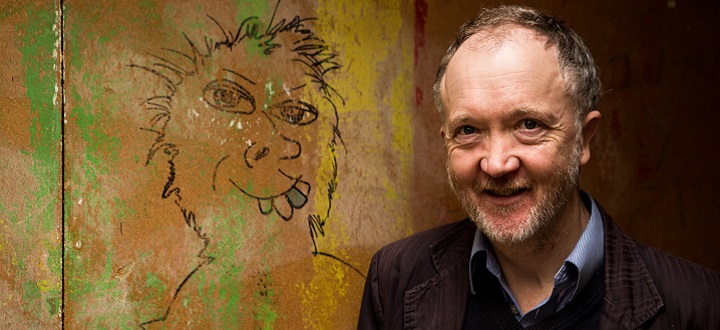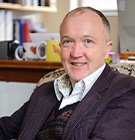It’s over 45 years since the Sex Pistols burst onto the UK music scene. The band, credited as one of the most influential acts in pop history, fell apart after only two and a half stormy years and one legendary album.
But fascinating traces of their cultural legacy remain. It’s literally written on the walls of a 17th century townhouse in London’s Denmark Street where lead singer Johnny Rotten scrawled caricatures of himself, his fellow band members and their associates around the grubby bedsit rooms where the group lived and rehearsed in the mid-1970s.
Listed status
The fact the cartoons remain in the house untouched – and recently protected by Historic England – is, at least partly, thanks to some innovative archaeological investigations involving a researcher at York.
Professor John Schofield, from our Department of Archaeology, worked with independent researcher Dr Paul Graves-Brown to negotiate access to the house. And what they found inspired a strand of pioneering research which helped bring the little-known work to the attention of the public – and heritage agencies.
Professor Schofield said: “It had been described as scribblings and graffiti on the walls so we didn’t really know what to expect. But I was very surprised - a lot of the caricatures are very accomplished. They are very clever, very funny ‘Bash Street Kids’-style caricatures of the main characters involved with the band."
Watch a film about Professor Schofield's research into the Sex Pistols' cartoons
NO FUTURE from Catherine Shaw on Vimeo.
Punk art v cave art
From those initial investigations back in 2011, Professor Schofield and Dr Graves-Brown went on to write a research paper exploring the cultural significance of the artworks. The accompanying press release compared the drawings to ancient cave art – a controversial view which generated headlines around the world.
“It’s fair to say there was a mixed reaction! But a mixed reaction is good because it shows that people are engaging with the issue.
“My view is that anything can be investigated in an archaeological way. It doesn’t matter if you are standing in a cave looking at 30,000- year-old paintings, or you are standing in a building in London looking at 40-year-old paintings made by a Sex Pistol.
“You are looking at marks someone has made on a wall. They have made them for a reason and there are various questions around how and why they made those marks, but these are standard questions an archaeologist would ask, no matter the circumstances. The timescale is irrelevant.”
Having raised the profile of the anarchic artwork, its cultural significance was recognised by Historic England who granted the building at 6 Denmark Street Grade II* listed status. This places the site among the top eight per cent of protected buildings in England, alongside architectural gems such as Battersea Power Station and the Coliseum Theatre in London.
Mixed feelings
But Professor Schofield has mixed feelings about the designation.“Punk was anti-authority. It was against the system – and now the system is giving it official recognition. That feels counterintuitive.
“I prefer the punk approach – punk was very transient, very underground and largely intangible. I think we get too hung up on trying to preserve everything for the future. The future will have its own heritage whatever we do."
Professor Schofield is working on further research with Dr Graves-Brown which explores reactions to the heritage listing, including the views of Johnny Rotten, now known as John Lydon. His archaeological investigations were also the subject of a Research in Focus public lecture event at York.
Transit van to techno
The Sex Pistols’ artwork is just one highlight of a prestigious academic career that, more recently, has focused on the cultural heritage of the contemporary past, rather than ancient ruins.
Professor Schofield was one of a team who “excavated” a battered transit van (the bonnet takes pride of place in his office); he sorted through over 600 artefacts from one of the Greenham Common peace camps; and he explored the cultural legacy of Berlin’s techno music scene.
“The transit van project was quite innovative at the time. We were doing it partly because archaeology is about people and stories and our attachment to objects.
“That can be just as relevant for an everyday item like a transit van as it can for a stately home and we wanted to make that point. I like to think of it as punk archaeology. Now I’ve progressed to the archaeology of punk!”
The text of this article is licensed under a Creative Commons Licence. You're free to republish it, as long as you link back to this page and credit us.





